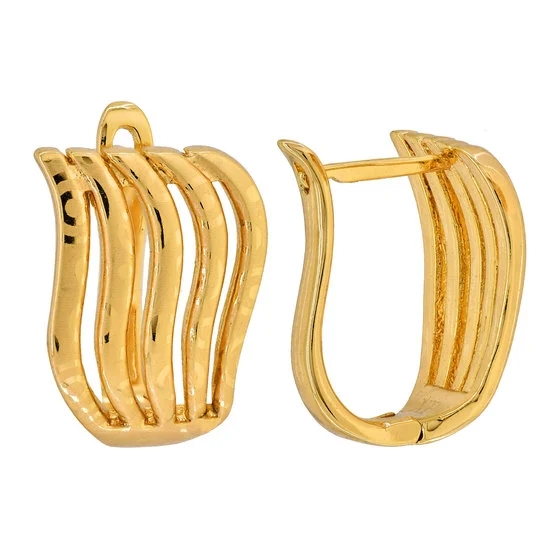Are you interested in learning how to start a handmade jewelry business? The demand for unique, handcrafted jewelry has been on the rise, presenting a lucrative opportunity for aspiring entrepreneurs. This article will guide you through the essential steps and considerations for launching your own successful venture in the handmade jewelry industry.
In recent years, there has been a significant shift in consumer preferences towards handmade and artisanal products, including jewelry. Customers are increasingly seeking out one-of-a-kind pieces that reflect individuality and craftsmanship, creating a thriving market for handmade jewelry businesses. With the right approach and strategies, aspiring jewelry makers can tap into this growing demand and establish a successful business of their own.
From conducting market research to understanding legal requirements and developing a strong brand identity, this guide will cover all the necessary aspects of starting a handmade jewelry business. Whether you have a passion for designing unique pieces or are looking to turn your hobby into a profitable endeavor, this article will provide you with valuable insights and practical tips to kickstart your entrepreneurial journey in the world of handmade jewelry.
Market Research
Before starting a handmade jewelry business, it is crucial to understand the target market for your products. Conducting thorough market research will provide valuable insights into the demographics, preferences, and trends that will help you tailor your products and marketing efforts effectively. Here are some key steps on how to start handmade jewelry business through market research:
1. Identify your target audience: Determine the specific demographic groups that are most likely to be interested in handmade jewelry. This may include age, gender, income level, and lifestyle factors. Understanding your target audience will allow you to create designs and marketing campaigns that resonate with their preferences.
2. Analyze preferences and trends: Research current trends and popular styles in the handmade jewelry industry. Look at what types of materials, designs, and themes are capturing the attention of consumers. You can also gather information by visiting craft fairs, browsing online marketplaces, and engaging with potential customers on social media.
3. Gather feedback: Engage with potential customers to gather feedback on your product ideas and designs. Conduct surveys or focus groups to understand what features or styles they look for in handmade jewelry. This valuable feedback can help you refine your product line and make it more appealing to your target market.
By conducting comprehensive market research, you will be better equipped to make informed decisions about the design, pricing, and marketing of your handmade jewelry products. Understanding the needs and preferences of your target market is essential for building a successful business in this competitive industry.
Business Plan
Starting a handmade jewelry business requires careful planning and consideration of various aspects to ensure its success. One of the key components of setting up a successful venture is creating a comprehensive business plan. This plan will serve as a roadmap for your business, outlining your goals, strategies, and financial projections. Here’s how to start on the right foot with your handmade jewelry business plan.
First and foremost, you need to establish a budget for your business. This includes estimating the initial costs of materials, tools, equipment, packaging, and marketing expenses. Setting a budget will help you understand the financial requirements of starting and running your handmade jewelry business efficiently.
Sourcing materials is another crucial aspect of starting a handmade jewelry business. You’ll need to research and find reliable suppliers for gemstones, beads, metals, wires, and other materials that align with your design aesthetic and quality standards. Building relationships with these suppliers can lead to better pricing and access to unique materials as your business grows.
Pricing strategies are essential for determining the value of your handmade jewelry products in the market. Consider factors such as material costs, labor time, craftsmanship, uniqueness of designs, and market competition when pricing your jewelry pieces. Your pricing should reflect the quality and creativity of your work while remaining accessible to your target customers.
| Aspect | Description |
|---|---|
| Budgeting | Estimating initial costs for materials, tools, equipment, packaging. |
| Sourcing Materials | Researching and finding reliable suppliers for gemstones, beads, metals etc. |
| Pricing Strategies | Determining the value of handmade jewelry products in the market considering material costs & creativity. |
Legal Requirements
When starting a handmade jewelry business, it is important to understand the legal requirements involved in order to operate your business legally. Here are some essential steps and requirements to consider when launching your venture:
1. Obtain a Business License: To start a handmade jewelry business, you will need to obtain a business license from your local government or municipality. This license allows you to legally operate as a business entity within your area. Check with your local government office to find out the specific requirements for obtaining a business license in your area.
2. Sales Tax Permit: Depending on your location, you may be required to obtain a sales tax permit in order to collect and remit sales tax on the items you sell. This permit ensures that you are in compliance with state and local tax regulations. Research the sales tax requirements in your area and apply for the necessary permit to avoid any legal issues.
3. Compliance with Product Safety Regulations: When creating handmade jewelry, it is important to ensure that your products comply with safety regulations and standards. This may include using non-toxic materials, providing proper labeling and packaging, and adhering to any specific guidelines for jewelry products set by consumer safety agencies.
4. Trademark and Copyright Protection: As you develop unique designs for your handmade jewelry, it is important to consider trademarking or copyrighting your work to protect it from infringement. Research the process of obtaining trademarks or copyrights for your designs and consider seeking legal advice if needed.
By understanding and fulfilling these legal requirements, you can establish a strong foundation for your handmade jewelry business while avoiding potential legal pitfalls along the way.
Branding and Marketing
Building a strong brand identity is crucial for any business, and the handmade jewelry industry is no exception. When starting a handmade jewelry business, it’s important to develop a unique brand identity that sets your products apart from the competition.
This can include creating a compelling brand story, choosing a distinct aesthetic, and establishing a recognizable logo and color palette. By crafting a cohesive brand identity, you can effectively communicate the values and personality of your business to potential customers.
Once you have established your brand identity, it’s essential to implement marketing strategies to reach potential customers both online and offline. In today’s digital age, having a strong online presence is vital for any business.
This includes setting up an engaging website or online store, utilizing social media platforms to showcase your products, and implementing targeted digital marketing tactics such as email campaigns or influencer partnerships. Additionally, offline marketing efforts such as participating in local craft fairs or pop-up events can help you connect with customers in person and build relationships within your community.
In addition to creating brand awareness through marketing efforts, it’s important to focus on building customer relationships and loyalty. Providing exceptional customer service, offering personalized shopping experiences, and maintaining transparent communication with your audience can help establish trust and loyalty among your customer base. By developing effective branding and marketing strategies, you can increase the visibility of your handmade jewelry business and attract potential customers who resonate with your unique brand identity.
As outlined in this section of the article How to Start Handmade Jewelry Business is important to focus on developing a strong branding strategy alongside effective marketing efforts in order to attract potential customers both online and offline. By doing so, aspiring entrepreneurs entering the handmade jewelry industry are better equipped to stand out in the market while also building long-lasting relationships with their target audience.
Product Development
Exploring Jewelry-Making Techniques
One of the key aspects of starting a handmade jewelry business is to explore various jewelry-making techniques. This could include wire wrapping, bead weaving, metal stamping, and more. It’s important to experiment with different techniques to find the ones that best suit your style and the aesthetic you want for your jewelry line. By mastering multiple techniques, you can offer a diverse range of products to cater to different customer preferences.
Finding Inspiration for Designs
When starting a handmade jewelry business, finding inspiration for designs is crucial in creating a unique and appealing product line. Inspiration can come from anywhere – nature, architecture, art, or even cultural influences. You can also draw inspiration from current fashion trends and incorporate them into your designs. Keep an eye on what’s trending in the industry while infusing your own creative twist to make your jewelry stand out in the market.
Cultivating a Unique Style
To succeed in the handmade jewelry business, it’s essential to develop a distinctive style that sets your brand apart from others in the industry. Your unique style will be what attracts customers and keeps them coming back for more. Whether it’s minimalist, bohemian, vintage-inspired, or modern chic – cultivating a consistent and recognizable style is key to differentiating yourself from competitors.
By exploring different jewelry-making techniques, finding inspiration for designs, and cultivating a unique style, aspiring entrepreneurs can create a diverse and appealing product line for their handmade jewelry business. These steps are crucial in establishing a strong brand identity and meeting the demands of potential customers looking for unique and high-quality handmade jewelry products.
With careful planning and attention to detail during product development, individuals looking to start their own handmade jewelry business will be well-equipped to enter this thriving market with confidence.
Sales and Distribution
Selling your handmade jewelry is a crucial part of starting and growing your business. Deciding on the best channels for distribution can greatly impact your reach and ultimately, your success. By exploring different sales opportunities, you can maximize the visibility of your products and connect with potential customers in a variety of ways.
Online Platforms
With the rise of e-commerce, selling handmade jewelry online has become increasingly popular. Establishing an online presence through platforms such as Etsy, Shopify, or even social media can help you reach a global audience. Setting up an e-commerce site allows you to showcase your jewelry designs, process transactions securely, and build a loyal customer base.
Craft Fairs
Participating in craft fairs and trade shows provides an excellent opportunity to showcase your handmade jewelry in person. These events allow you to interact directly with potential customers, receive immediate feedback on your designs, and network with other artisans. Additionally, craft fairs can generate substantial sales and help you gain exposure within the local community.
Consignment Opportunities
Collaborating with boutiques, gift shops, or galleries to sell your handmade jewelry on consignment is another viable distribution channel. This arrangement allows you to display your products in established retail locations without the upfront cost of purchasing space. Consignment agreements typically involve sharing a percentage of sales with the retailer while providing them with unique pieces that complement their existing inventory.
By strategically utilizing these various channels for selling handmade jewelry, you can effectively expand your reach and connect with different customer segments. Experimenting with different sales opportunities will allow you to identify which methods work best for your business and help you achieve sustainable growth. Ultimately, diversifying your distribution channels can increase sales and strengthen brand recognition within the market.
Financial Management
Managing the financial aspects of a handmade jewelry business is crucial for long-term success. Proper financial management includes bookkeeping, inventory management, and setting financial goals for growth. To start a handmade jewelry business on the right foot, it’s essential to establish solid financial practices from the beginning.
Bookkeeping is a fundamental part of financial management for any business, including a handmade jewelry enterprise. Keeping track of expenses, revenues, and profit margins will provide valuable insights into the overall health of the business. Utilizing accounting software or hiring a professional accountant can help streamline this process and ensure accurate record-keeping.
In addition to bookkeeping, effective inventory management is vital for a handmade jewelry business. Maintaining optimal stock levels – neither overstocked nor understocked – is key to maximizing profitability and minimizing waste. With careful inventory management, business owners can avoid tying up capital in excess stock while ensuring that popular items are consistently available to customers.
Setting financial goals for growth is another critical aspect of financial management for a handmade jewelry business. Whether it’s aiming for a certain level of revenue within a specific timeframe or expanding into new markets, having clearly defined objectives helps guide strategic decision-making and measure success. By regularly reviewing and adjusting these goals as needed, entrepreneurs can stay focused on long-term sustainability and expansion.
Aspiring entrepreneurs who want to know
Conclusion
In conclusion, starting a handmade jewelry business can be a rewarding and profitable venture for those with a passion for creativity and design. By following the key steps outlined in this article, including conducting thorough market research, creating a solid business plan, understanding legal requirements, and implementing effective branding and marketing strategies, aspiring entrepreneurs can set themselves up for success in the industry.
One of the most important aspects of starting a handmade jewelry business is to differentiate your brand and products from the competition. This can be achieved through unique designs, high-quality materials, and a compelling brand story that resonates with your target customers. Additionally, utilizing social media platforms, participating in craft fairs, and seeking out online marketplaces can help increase visibility and attract potential buyers.
Ultimately, while starting a handmade jewelry business requires dedication, creativity, and hard work, it also offers the opportunity to turn a passion into a fulfilling career. With careful planning and strategic decision-making, aspiring entrepreneurs can position themselves for success in this thriving industry. For those looking to pursue their entrepreneurial aspirations in the world of handmade jewelry, now is the time to take action and embark on this exciting journey.
Frequently Asked Questions
How to Start a Bracelet Business Online?
Starting a bracelet business online requires careful planning and execution. Firstly, you need to identify your target market and unique selling proposition. Then, create a strong brand and product line, set up an e-commerce website, and implement effective marketing strategies to drive traffic and sales.
Are Jewelry Stores Profitable?
Jewelry stores can be profitable if managed well. Success in this industry depends on factors such as location, inventory selection, pricing strategies, and customer service. Adapting to market trends and offering unique products can help maximize profitability in the jewelry business.
How to Start Selling Handmade Jewelry?
To start selling handmade jewelry, begin by honing your craft and creating a cohesive collection of pieces. Research the target market to understand preferences and trends. Establish an online presence through platforms like Etsy or social media, while also considering local markets or craft fairs for sales opportunities.

Welcome to my jewelry blog! My name is Sarah and I am the owner of this blog.
I love making jewelry and sharing my creations with others.
So whether you’re someone who loves wearing jewelry yourself or simply enjoys learning about it, be sure to check out my blog for insightful posts on everything related to this exciting topic!





